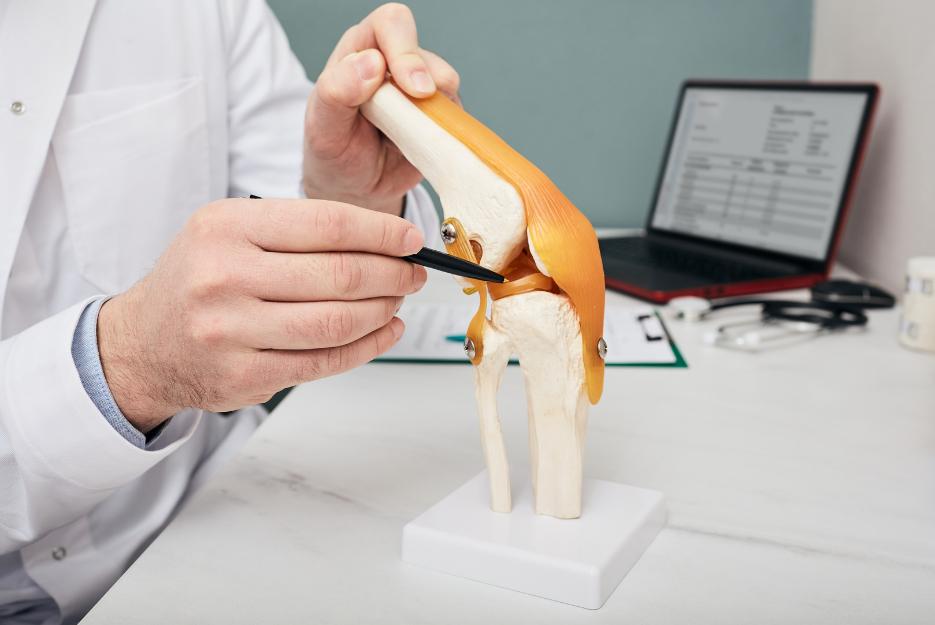Torn Meniscus Causes & Treatment
What Is A Meniscus?
The menisci are C-shaped, rubbery cartilage discs found in pairs between the bones of the knee joint. They are referred to as the medial meniscus (on the inside of the knee) and the lateral meniscus (on the outside of the knee).
If you’re experiencing a meniscal tear, you’re not alone—it’s estimated that 6 in 1000 people in Australia suffer from this type of knee pain. Men are more likely to sustain this injury than women, with the risk being 2.5 to 4 times higher, and the peak age for injury is between 20 and 29 years.

Table of Contents
Why Is Your Meniscus Important?
What Causes A Meniscus To Tear?
Meniscus tears can occur from:
- Excessive forces within the knee joint, between the thigh bone (femur) and shin bone (tibia). This often results from twisting the knee while it is firmly planted on the ground and flexed, making it a common sporting injury in young adults. This includes sports that involve quick pivots or changes in direction, fast-paced sports like soccer and basketball, and those that require fast movements during activities that bend and straighten the knee
- Age-related degeneration. This occurs gradually over time in older adults, as a result of the force on the knee joint over a number of years. This may occur alongside other problems within the knee joint like osteoarthritis
- The meniscus may also be torn simultaneously with other knee injuries like anterior cruciate ligament (ACL) tears, which occur in 50% of meniscus tears
Visit Us Today
Hope Island
Phone: 07 5510 9222
Located within Hope Island Marketplace Medical & Skin Clinic, 99-103 Broadwater Ave Hope Island QLD 4212
Jimboomba
Phone: 07 5546 9766
Located Within Jimboomba Medical Centre, Unit 1/69 Cerina Cct, Jimboomba QLD 4280
Beenleigh
Phone: 07 3287 2224
Located Within Beenleigh Mall Medical Centre, Shop24A, 40/68 Main Street, Beenleigh QLD 4207
Eagleby
Phone: 07 2889 1666
Located Within Eagleby Family Practice, 5/120 River Hills Rd, Eagleby QLD 4207
Harristown
Phone: 07 4635 6111
Located Within Toowoomba Medical Centre, 146 Drayton Road, Harristown QLD 4350
Marsden
Phone: 07 3067 2370
Located Within Marsden Family Doctors, Shop 28/55-77 Chambers Flat Rd, Marsden QLD 4132
Keperra
Phone: 07 3355 4082
Located Within Keperra Medical Clinic, 14 Dallas Parade Keperra QLD 4054
Coomera
Phone: 07 5573 5663
Located Within Doctors @ Coomera Central, Shop 6, 21 Coomera Grand Drive, Upper Coomera, QLD 4209
Newtown
Phone: 07 4633 8700
Located Within Ochre Medical Centre Wyalla, Shop 20, 238 Taylor Street, Newtown QLD 4350
Symptoms & Diagnosis
If you suspect a meniscal tear, it’s crucial to have it professionally diagnosed as soon as possible to confirm the injury and rule out other potential causes of knee pain, such as ligament tears or tendon strains. Your podiatrist can assist with this diagnosis.
Treating Meniscal Tears
Before you can see your podiatrist, you can help alleviate the painful symptoms of a meniscal tear by using:
- Rest (with weight-bearing as tolerated or using crutches)
- Ice
- Compression bandaging
- Elevation of the affected limb to reduce acute swelling and inflammation
The next step in treatment depends on the severity and location of the tear, as different areas of the meniscus have varying blood supply. Small tears in well-supplied areas often respond well to regular treatment, while larger tears in poorly vascularized areas may require additional measures, including surgery.
At Priority Podiatry Clinic, we use a range of treatment strategies to support your recovery. This may include custom foot orthotics to promote optimal leg alignment and reduce strain on the knee joint, as well as knee bracing, strapping, stretching and strengthening exercises, and ensuring your footwear provides adequate stability and support.
We also recommend working with a skilled physiotherapy team experienced in treating meniscal tears. Early assessment will guide you toward the best strength and conditioning techniques, maximizing recovery and helping to prevent re-injury or worsening of the condition.
Enquire Now
Not The Condition You Are Looking For?
Find out more about the conditions we treat by clicking below.
